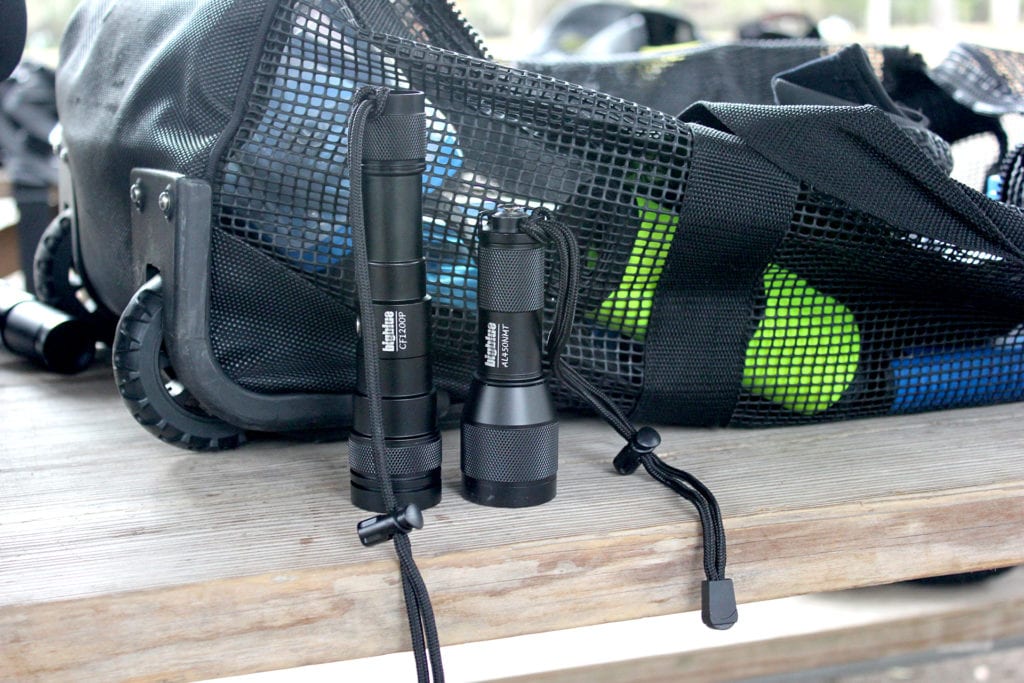Kerry Freeland / Dive Pros
Smart Divers make sure they equip themselves with the essential tools they will need to have an enjoyable Dive and make the most of their brief visits to the Underwater World. One very essential tool is a Light source for times when natural light fades or is unavailable. There is a huge variety of Lights available to choose from ranging from very tiny lights that run on watch batteries up to large canister style lights that could illuminate a baseball field. It is recommended that all divers carry at least one small light at all dives. Reefs and Wrecks are covered with nooks and crannies that allow many fascinating creatures to hide from view. Taking the time to peer into these dark recesses can be educational and rewarding. Divers who have never seen a Reef at night will be shocked to see how vibrant and alive the reef becomes after the sun goes down. Diving at night not only requires some additional training but also requires at least Two Dive Lights. Recent advances in underwater lighting have produced some of the brightest and best dive lights to come along in over 50 years. Make sure you visit a the Dive Pros and let one of the professional sales staff help you select the right tool for your next underwater adventure!
Essential Tip for Dive Light Owners
It is pretty much a fact of life that at some point you will flood an underwater light. There are some important things you can do to prevent permanent damage to your light. As soon as you notice your light has been compromised (and your out of the water) you need to open it up and dump out both the water and the batteries. (Dispose of your batteries properly please.) CAUTION: Sea water and batteries can produce both a caustic and explosive results so NEVER open a flooded flashlight without taking precautions to protect your eyes and your bare skin. Opening in a bucket of fresh water can be helpful. Immediately and thoroughly rinse your light and all the components with fresh water. You can actually soak your light and its parts in fresh water to make sure you get rid of any sea water or battery leakage that may linger. Use a hair dryer and completely dry all your parts. Replace your O ring(s) if needed. Carefully reassemble your light and without putting in new batteries, check it for leaks. You can submerge it and look for bubbles or simply take it on a dive and see if it leaks again.
Most leaks are the result of either dirty or misaligned O’rings or due to not sufficiently tightening or by over tightening your seals. Over tightening seems to be more prevalent a cause than under tightening so be careful not to use excessive force when screwing your light back together.
For more information, contact Dive Pros at #850-456-8845

